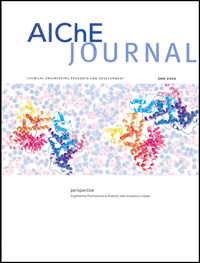
Biopreservation
Behavior of biomolecules in glassy matrices

(90,107,112,132,137,143,156)
The commercialization of many valuable biochemicals, such as therapeutic proteins or vaccines, requires the design of formulations that are stable during shipping and long-term storage. Concentrated solutions of carbohydrates in water are widely used in the pharmaceutical industry, generally in vitreous form, for the storage, protection, and formulation of labile biochemicals. Well-known examples include trehalose- and sucrose-based glasses. Generally, these matrices are prepared by water removal from an initially dilute solution. The slow crystallization kinetics of technically important carbohydrates allows the solution to become deeply supersaturated, and when its viscosity reaches ca. 1013 Poise the material becomes a glass, that is to say a disordered solid. The molecular mechanisms by means of which vitreous matrices confer stability to proteins and other biochemicals are poorly understood. The role of water, in particular, remains a puzzle, recent experiments suggesting that it retains liquid-like mobility within the glass. Furthermore, it is not understood why some proteins retain their biological activity upon reconstitution in spite of appreciable structural distortion in the glassy matrix, while others do not (156).
Because of this lack of understanding of the underlying physical chemistry, the selection of components for pharmaceutical formulations is more art than science (112). In ongoing work we are investigating experimentally the behavior of proteins (156) and nucleic acids in high-Tg glassy matrices. Our goal is to identify conditions that lead to viral inactivation while preserving the biological activity of proteins. We are investigating, by molecular simulation, the relationship between bulk properties (species diffusivity, viscosity, glass transition temperature), carbohydrate molecular architecture, and hydrogen bond network topology and dynamics (90, 143). In collaboration with the Center for Neutron Research at NIST we recently investigated the transport properties of carbohydrate-water mixtures by quasi-elastic neutron scattering (107). We are investigating the thermal and structural properties of DNA at low hydration levels (132), as well as the thermodynamics of liquid-phase protein stabilization by carbohydrates (137). Our work aims at providing fundamental understanding of the physical chemistry of stabilization of biomolecules in vitreous matrices and in solution.
(*) Numbers in parenthesis refer to articles in the chronological bibliography.
